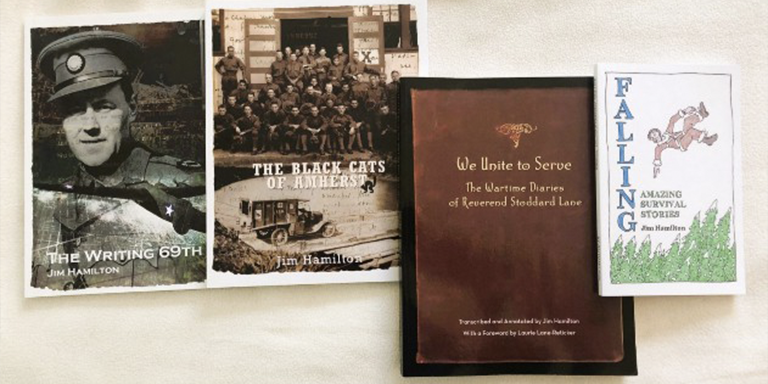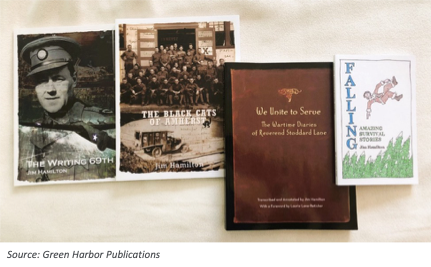RESOURCES
BLOG
Join in the community forum! The thINK blog is a place for community members to share their opinions, best practices, successes, and challenges. Add your comments to the blogs published here or write a blog and we’ll post it for you.

Print Convenience and Value
Introduction
I have two distinct uses for print in my life these days. First, I’m a self-published author and I use an online on-demand service for the books that I write. Second, I volunteer at a local church and I often need printing done in that role. The printed products are mostly posters and occasionally postcards, signs, or banners. I could get these through an online service provider, but I am fiercely loyal to local businesses. And so, though I use an online service for book publishing, I use a nearby print service provider (PSP) for my church projects. In the end, both options provide me with the convenience and value that I am looking for.
Print Convenience and Value Online
I am an amateur historian. My first book came about by accident. In the mid-1990s, I was strolling with my infant son when we came across a memorial marker in a family plot in Sayville, New York. The inscription read in part, “In Memory of Robert Perkins Post, Correspondent New York Times, Killed in Air Attack over Wilhelmshaven, February 26, 1943.” Post had trained to accompany an 8th Air Force bomber crew on a bombing mission. The aircraft was shot down, killing Post and all but two of the crew. Post was part of a group of journalists known as the “Writing 69th,” which included such well-known figures as Walter Cronkite and Andy Rooney. I looked around a bit and found almost nothing about this story, and so I decided to research and write a book about it myself.
Figure 1: Some of My Self-Published Books

I chose to publish that book through Lulu.com. For no money up front, I could have a web storefront as well as the ability order books for my own use at author talks and other events. At the time (1999), services like Lulu were blossoming. They built upon the combined power of production digital printing and the internet. The on-demand printing that Lulu provided gave me the ability to offer book-of-one capability (books are printed and delivered only after an order has been received, without any work on my part) as well as just-in-time manufacturing capability (to allow me to acquire the desired number of books whenever I needed them).
I have remained a Lulu customer over the years as I published other books, including my latest, which I wrote and illustrated, “Falling: Amazing Survival Stories.” I am humbled by the power inherent in online on-demand book and other printing services. The convenience and the value keep me coming back as a self-publisher.
Print Convenience and Value Locally
As a church volunteer in a variety of roles, I frequently have the need for a printer for short runs of posters or other promotional items for church fundraisers. Though I could use an online printer for this, I prefer my local print & mail business center. It is right down the road from my house, the service is great, the prices are reasonable, and my work is turned around very quickly (often within hours). I just e-mail them a PDF of the design that another church volunteer has created, and they print it almost immediately. I could get the same work from an online provider, but it would have to be shipped and I would not get it as quickly. I also like the personal aspect of knowing that I have a relationship with a local business. In addition, my printer has gone the extra yard for me on a couple of occasions, for which I am extremely grateful.
Figure 2: Typical Examples of Posters for Church Events

Where Online and Local Overlap
Sometimes there are overlaps between the work that I send to my online and local PSPs. For example, I wanted to print a sixteen-page booklet that is an excerpt from my book, “Falling: Amazing Survival Stories.” I could have gone to my online provider, but I did not intend to sell this excerpt online. So I just sent the PDF to my local PSP, who printed and bound it for me. If I were ever to print a calendar as part of my church work, I would probably go to an online PSP, because there I would have access to a composition tool designed for calendar creation. My local PSP does not offer that service.
I have wondered as well whether it might make sense to have a larger quantity of my books printed more cheaply at a sizable book printer. It would save me some on a per-book basis, but I would either have to go pick them up or have them shipped, which adds considerable cost. I might feel differently if I lived down the street from a major book printer, but for me, convenience is as important as the cost per book.
The Bottom Line
Production digital printing is the linchpin that connects the convenience that I desire with the capabilities of on-demand printing. These values are made possible by the high-speed, toner-based, color copier/printer at my local PSP and by the high-end toner and inkjet production printing systems leveraged by Lulu.
Self-published books sometimes get a bad rap because of shoddy writing, editing, or design. What I love about self-publishing is that it allows me to produce my books exactly the way that I want to. I do not have to answer to the whims of an editor or publisher, and I like it that way. In a similar fashion, working with a local PSP is convenient and gives me the satisfaction of knowing that I am supporting a business in the town I live in.
Note: For those who are interested in more details on my experiences with self-publishing, check out an article I wrote on LinkedIn entitled, “What Self-Publishing Is Like.”
Author bio: Jim Hamilton of Green Harbor Publications (www.greenharbor.com) is an industry analyst, market researcher, writer, and public speaker. For many years he was Group Director in charge of InfoTrends’ Production Digital Printing & Publishing consulting services. He has a BA in German from Amherst College and a Master’s in Printing Technology from the Rochester Institute of Technology.
